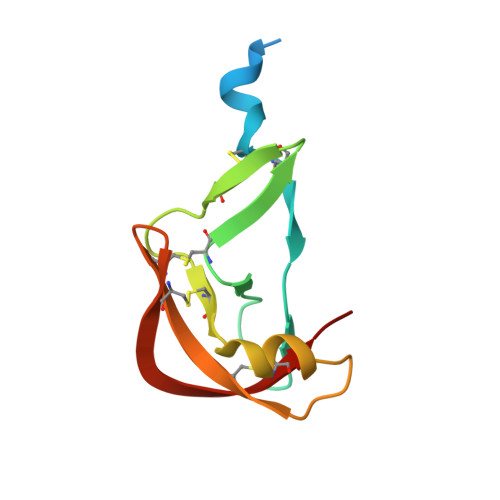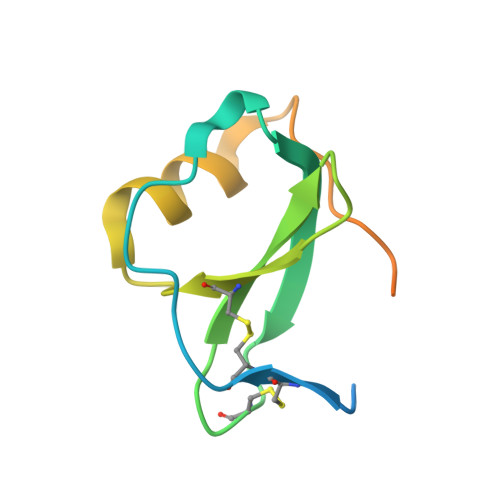Engineering broad-spectrum inhibitors of inflammatory chemokines from subclass A3 tick evasins.
Devkota, S.R., Aryal, P., Pokhrel, R., Jiao, W., Perry, A., Panjikar, S., Payne, R.J., Wilce, M.C.J., Bhusal, R.P., Stone, M.J.(2023) Nat Commun 14: 4204-4204
- PubMed: 37452046
- DOI: https://doi.org/10.1038/s41467-023-39879-3
- Primary Citation of Related Structures:
7SCS, 7SCT, 7SCV, 8FJ0, 8FJ2, 8FJ3, 8FK6, 8FK8 - PubMed Abstract:
Chemokines are key regulators of leukocyte trafficking and attractive targets for anti-inflammatory therapy. Evasins are chemokine-binding proteins from tick saliva, whose application as anti-inflammatory therapeutics will require manipulation of their chemokine target selectivity. Here we describe subclass A3 evasins, which are unique to the tick genus Amblyomma and distinguished from "classical" class A1 evasins by an additional disulfide bond near the chemokine recognition interface. The A3 evasin EVA-AAM1001 (EVA-A) bound to CC chemokines and inhibited their receptor activation. Unlike A1 evasins, EVA-A was not highly dependent on N- and C-terminal regions to differentiate chemokine targets. Structures of chemokine-bound EVA-A revealed a deep hydrophobic pocket, unique to A3 evasins, that interacts with the residue immediately following the CC motif of the chemokine. Mutations to this pocket altered the chemokine selectivity of EVA-A. Thus, class A3 evasins provide a suitable platform for engineering proteins with applications in research, diagnosis or anti-inflammatory therapy.
Organizational Affiliation:
Monash Biomedicine Discovery Institute, and Department of Biochemistry and Molecular Biology, Monash University, Clayton, VIC, 3800, Australia.















